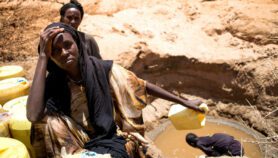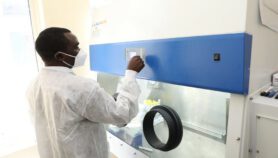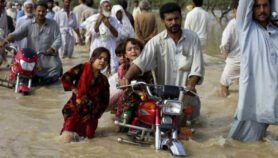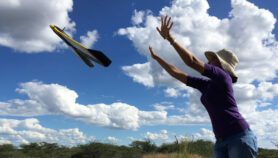By: Aregu Baklleh
Send to a friend
The details you provide on this page will not be used to send unsolicited email, and will not be sold to a 3rd party. See privacy policy.
[ADDIS ABABA] A failure to incorporate water quality data into measurements of progress on the Millennium Development Goal of access to safe water has made some countries appear closer to achieving the goal than they actually are, according to a new study.
UNICEF (the UN Children’s Fund) and the WHO share responsibility for monitoring progress towards the goal through a Joint Monitoring Programme (JMP), which classifies water sources into "improved" or "unimproved" categories.
Improved sources are assumed to be "safe". These include water piped into houses or yards, public taps, protected wells and collected rainwater. Unimproved sources — which are deemed "unsafe" — include unprotected wells and springs, water supplied by tanker trucks, and water from rivers, dams, lakes and canals.
Researchers from the Water and Health Research Centre at the University of Bristol, United Kingdom, analysed surveys conducted in 2004-5 by WHO and UNICEF in five countries including Ethiopia and Nigeria.
They noted a conclusion from the WHO/UNICEF surveys, that many "improved" water sources had frequently tested positive for microbial and chemical contamination. They incorporated relevant available data to recalculate population percentages with access to "safe" water.
Their work, published in the Bulletin of the World Health Organisation (March 2012), led to substantially lower estimates of progress towards achieving the MDG in four of the five countries studied. In Ethiopia, the national figure was revised downward by 11 per cent. In Nicaragua, it was 16 per cent, and in Nigeria it was 15 per cent.
"The 2012 assessment of the JMP on Drinking-Water and Sanitation states that the [MDG] target for drinking water has been met. However our research shows that if water quality were to be included, as we believe it should, then progress would be substantially lowered," said Robert Bain, co-author of the study.
The researchers noted that water quality data was not always available or reliable.
Bain said water quality data is collected in the countries where the surveys were carried out, and noted that one of the aims of the survey was to determine whether this national data could be used for global reporting purposes. But the study found measures of water quality contained in such data do not always match national or international standards.
"Most countries base their national standards for safe drinking water on the Guidelines for Drinking-Water Quality published by the World Health Organisation. Although standards are similar in many countries, national differences do exist," he said.
"The issue of water quality has been gaining increasing attention. The World Health Organisation has been specifically requested to address water quality in future monitoring efforts."
An official national report in 2010 declared that Ethiopia is well on track to meet targets in five of the MDGs, including access to safe drinking water.
Marew Assefa, an environmental science student at Addis Ababa University, said water quality was particularly low in rural regions of Ethiopia which had been reported as having access to safe drinking water, and commented that the findings of the study were not far-fetched.
However an official with the UN Development Programme in Ethiopia who spoke to SciDev.Net on condition of anonymity criticised the Bristol University team for singling out water quality among the many other set criteria for measuring access to safe drinking water.
The official insisted Ethiopia would have no trouble in achieving its MDG target on access to safe drinking water, but noted that more work needed to be done to achieve the target on sanitation.
References
Bulletin of the World Health Organization doi: 10.2471/BLT.11.094284 (2012)













